The BMW M3 has been the most iconic sports car for years as the staple of the M family. I can personally remember getting a ride in a friends 1998 E36 M3 4 door back in ’98 and falling in love with what that car could do. The handling and sound of the straight 6 engine was just pure sex. To this day I would still build one for fun. When the E46 BMW M3 came out, it was like a revolution of the M car and its SMG blew away competitors. We were fortunate enough to own a Laguna Seca blue one. When the V8 M3 came out, people were in shock of the horsepower that the E90 E92 M3 platform could put down. Its beefed up body was just ready to pounce. Like we did on our 2008 E90, adding a VF Supercharger kit made this car unstoppable with nearly 500 rear wheel horsepower. But what would be next for the M3 line up. We had already saw the M5 go from a V10 down to a V8 twin turbo for emissions and performance. So here we have the new M4 F82 with its 6 cylinder twin turbo setup.
The inside of the car is similar to the E90 with some extra features and functions that brought it up to the F10 M5 standards but not going overboard. The cockpit is still sporty and the new mult-function steering wheel is awesome. One of the coolest features on this particular M4 we are dealing with is the gauge display showing horsepower and torque as well as the heads up display. Unlike previous M models, this comes with real brakes. Actual Brembo calipers like the F10 M5 to give you some real stopping power. The air to water intercooler and dual intake system leave not much room for modification, but can be done. The carbon fiber horseshoe strut brace under the hood is pretty impressive and the overall package coming from this M4 is nothing short of amazing.
So for this Project BMW M4 courtesy of a customer, we plan to build some parts and showcase what the BMW M4 can do with some extra goodies. Our goal for this build will be to develop a great sounding exhaust system, some performance downpipes, an improved cold air intake system, and test our VR Tuned ECU Tuning Box Kit. So our first step was to get a baseline on our Mustang all wheel drive dyno. Since this is a California car, it has 91 octane in the tank. We chose to run this car in AWD mode to not have any affect on the traction control system which some new cars do when only the rear wheels are spinning. We calibrated the 7 speed auto in 3rd gear as we usually do with vehicles that are 7 speed or under and left our parasitic multiplier at 1.00. Typical drivetrain loss for a car on 91 octane and running in awd is 20%. The car made 371awhp and 378ft/lbs of torque. At the crank, the power is rated at 430 hp (320 kW; 440 PS) while torque will be over 500 N·m (370 lb·ft). Some cars have been known to be underrated from the factory and this M4 may be no different.
As our first mod being our multi-channel ECU tuning box kit, we were looking for some big power increase. Because many of the new vehicles cannot have their ECU data read out due to tuning encryption, the Tuning Box is a great solution and warranty friendly as a plug and play device. The M4 and M3 F80 F82 engine has the tuning box connecting to the boost sensors and crankshaft sensor. As tested by our UK partners, the tuning box adds about 80 horsepower to the crank and 100nm of torque. We have shared their dyno below. To verify the results, we always like to do our own testing here state side our octane can be different as well as vehicle testing procedures. Our car made about 70 ft/lbs of torque to the wheels and around 60 all wheel horsepower which is HUGE. Power at the very top dropped off because of lack of airflow and once the exhaust is upgraded should help tremendously. With the 2 turbochargers making 18.1psi stock, the additional boost really needs better flow to keep the power gains going all the way to redline.
Our first upgrade has been completed and we are in process for the next rounds coming up soon. So stay tuned to this BLOG POST for all the upgrades we are doing to this BMW M4 Project Car.
Baseline Dyno Run Video
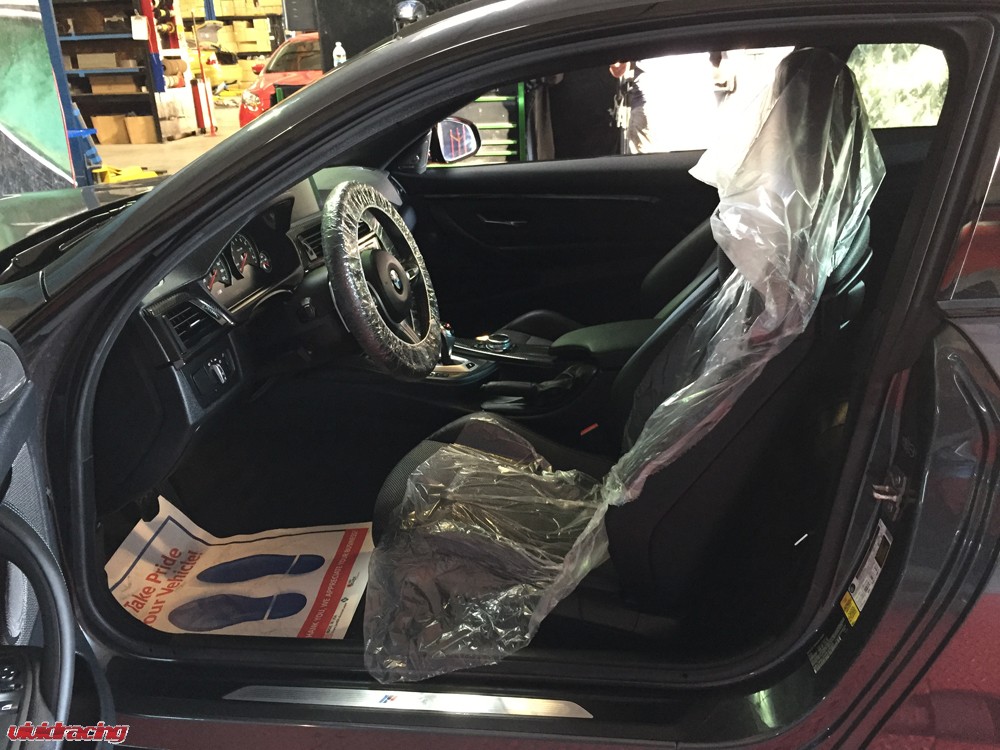
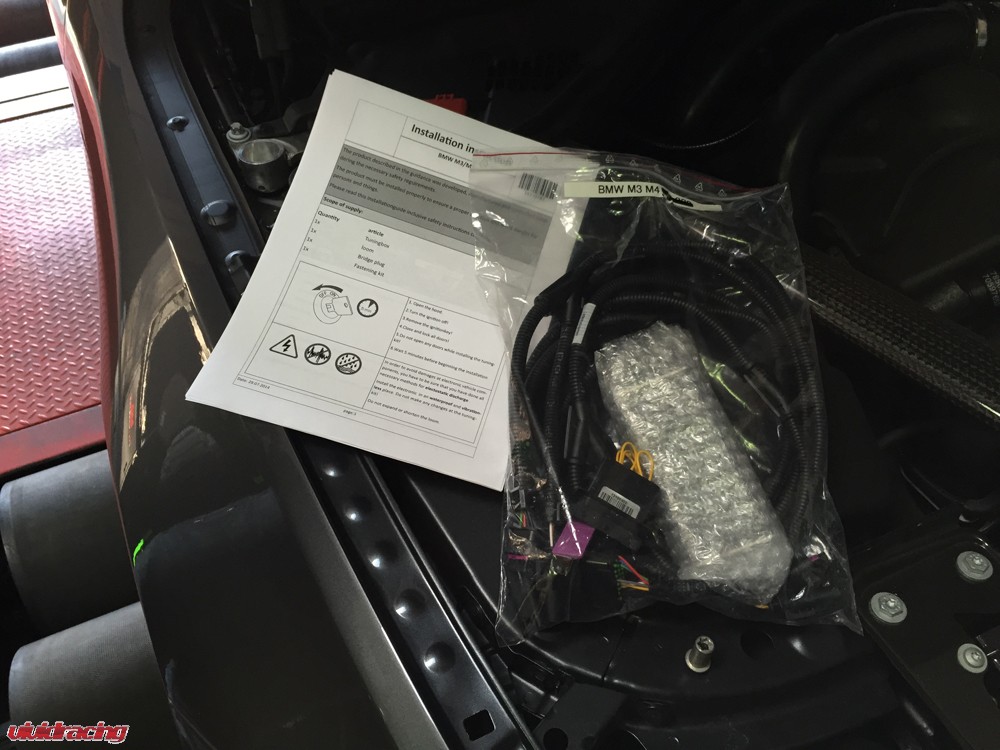
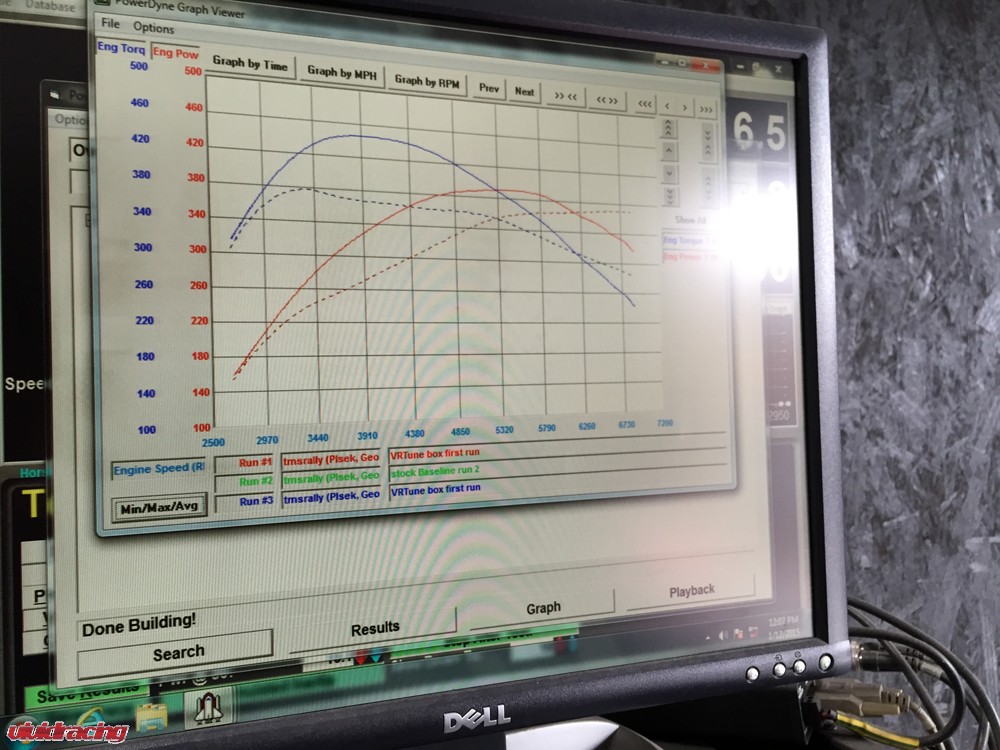
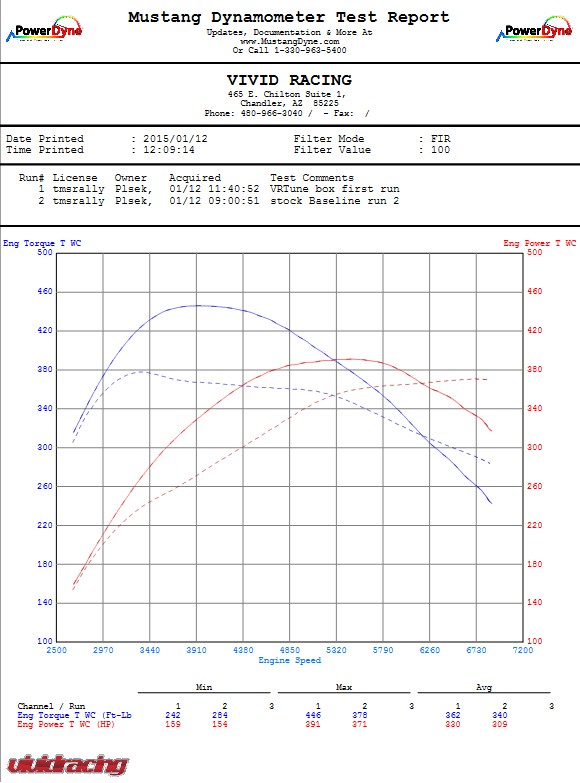
UK Dyno Test
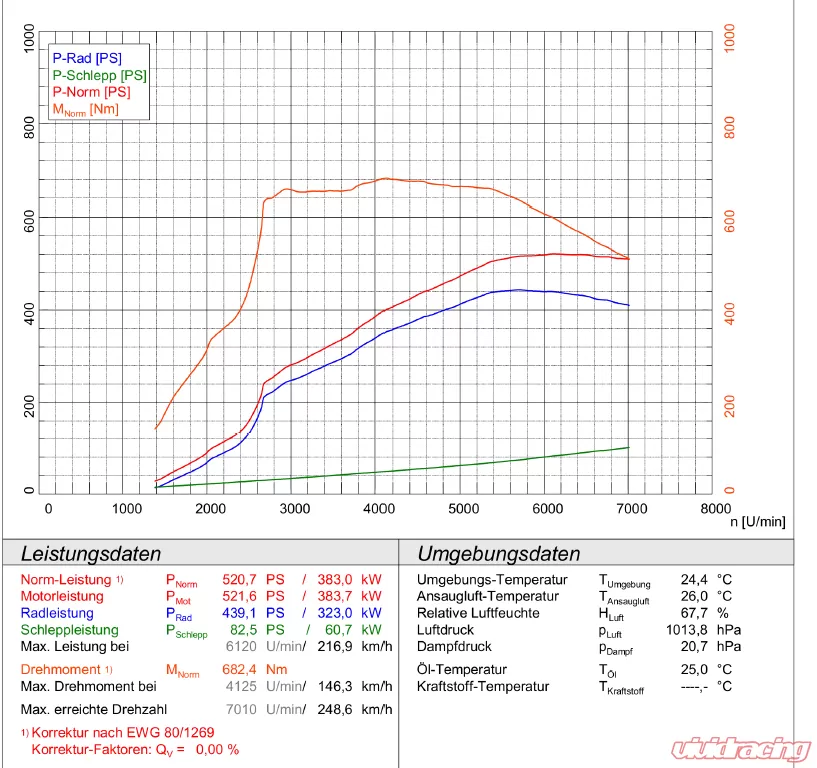


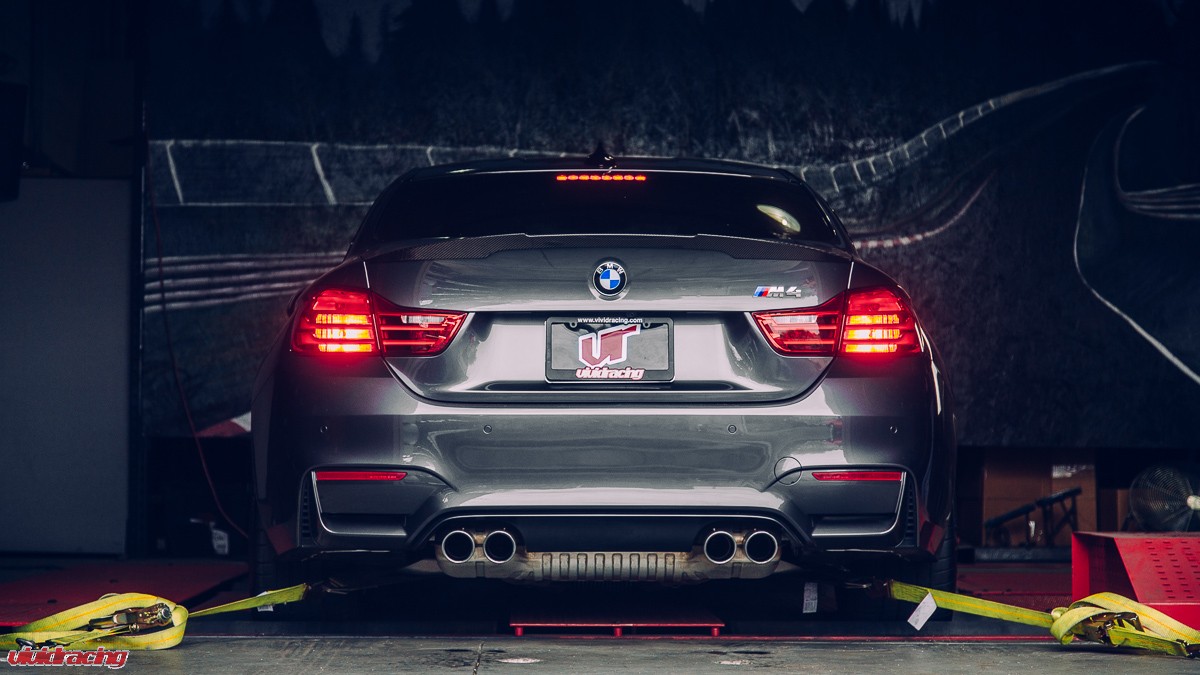
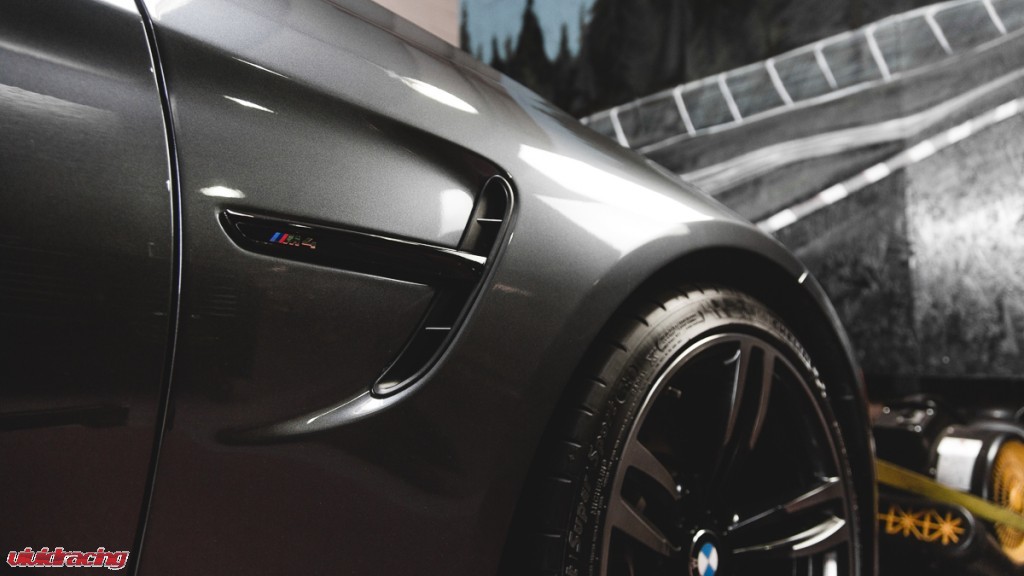
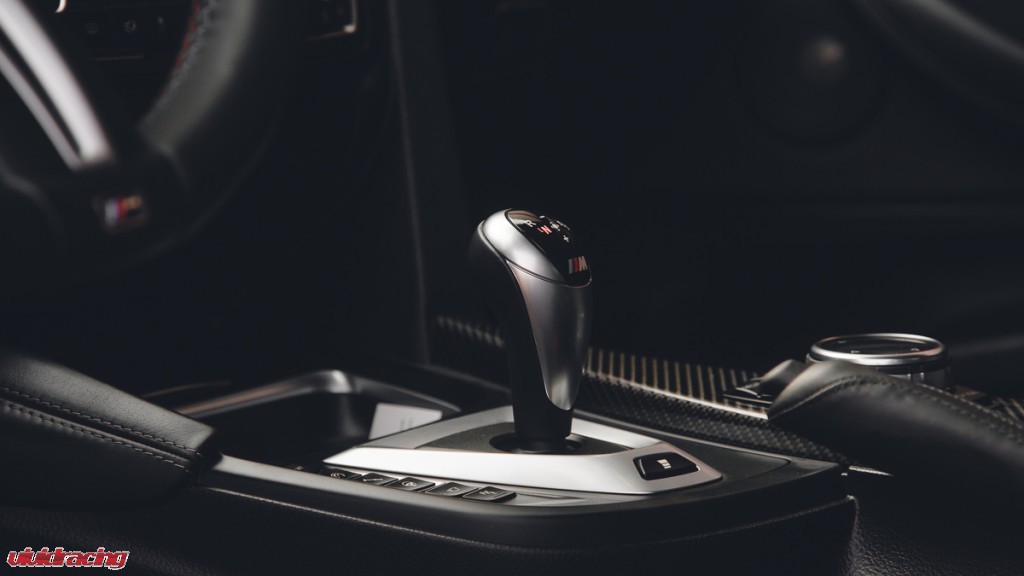
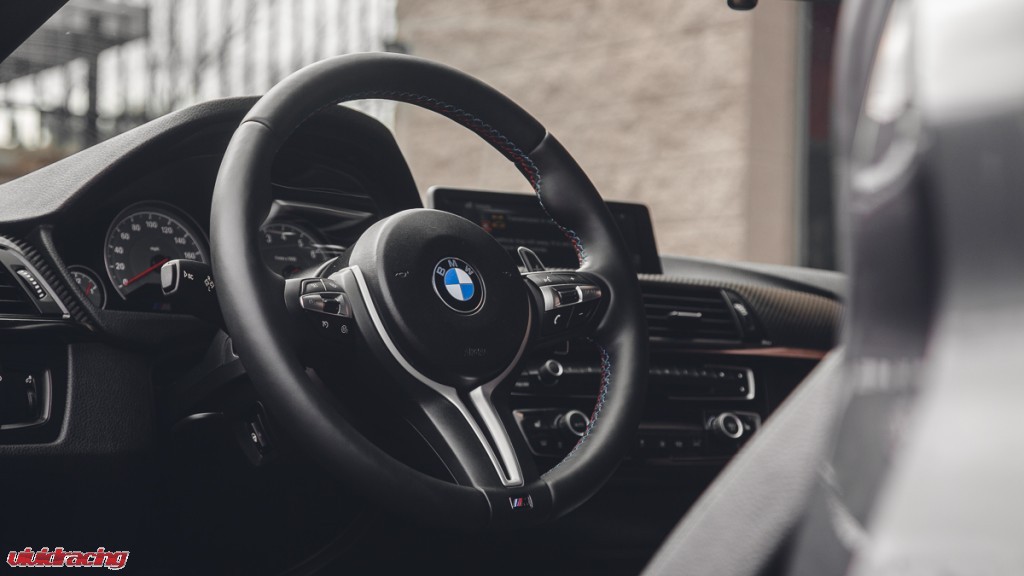
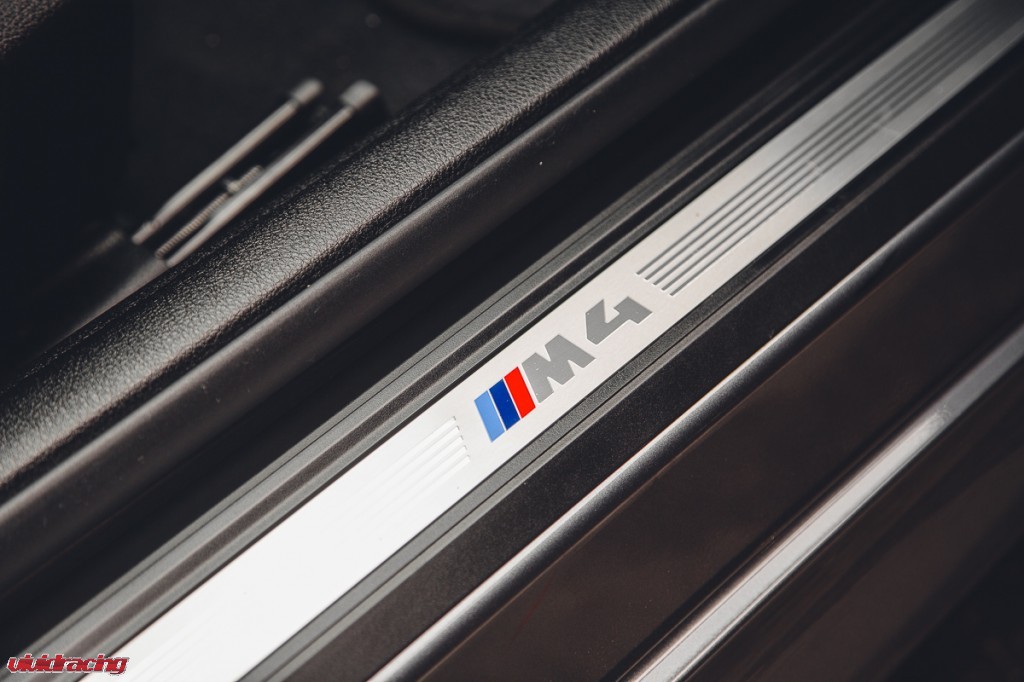
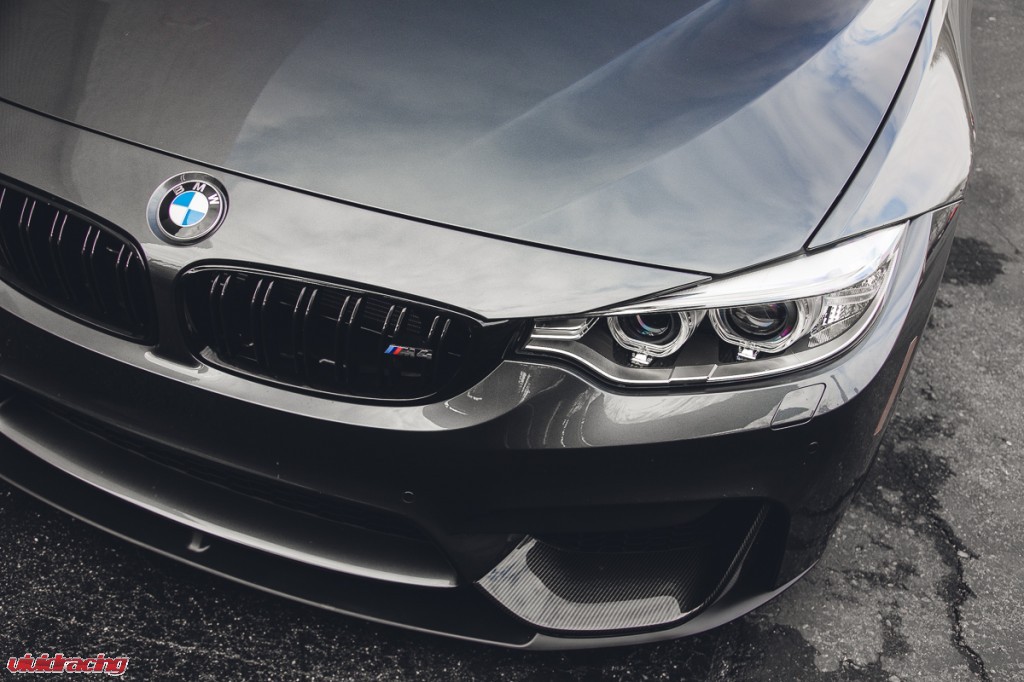
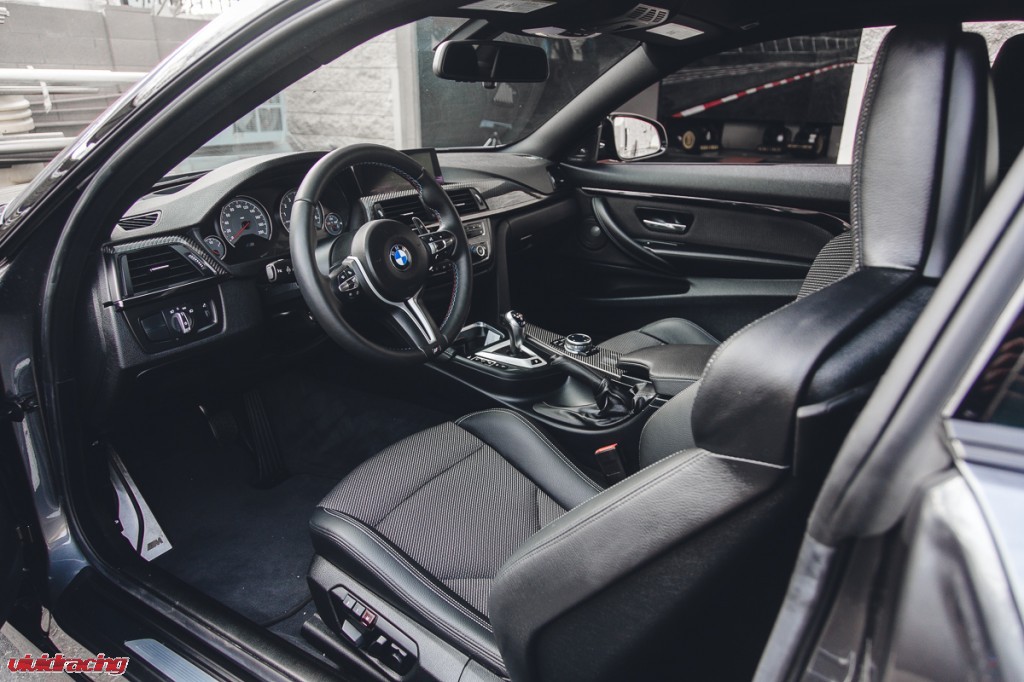
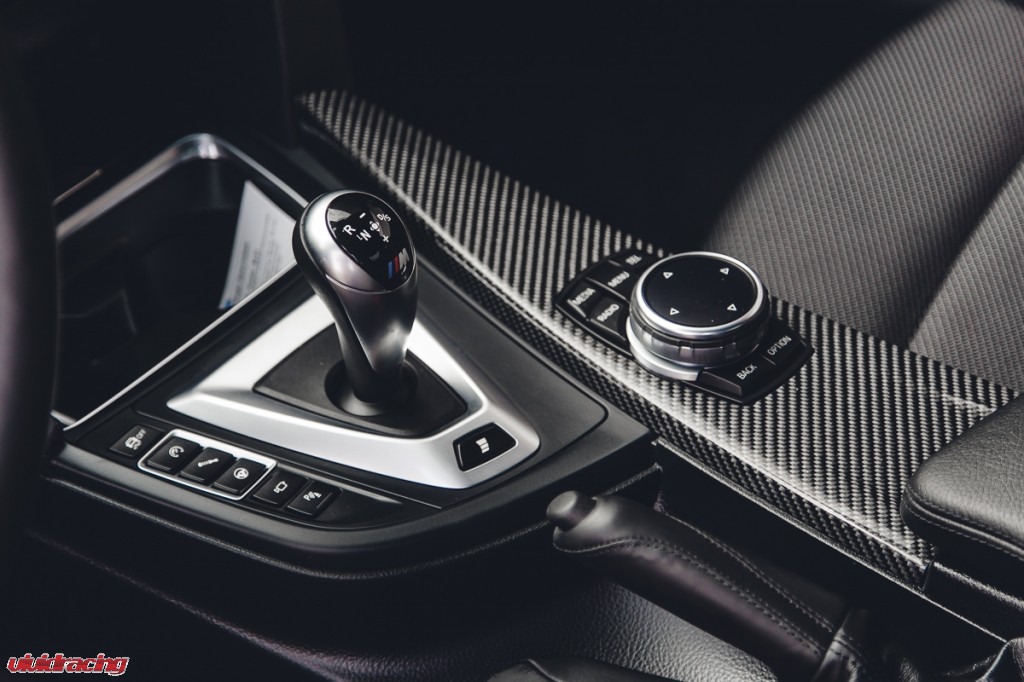
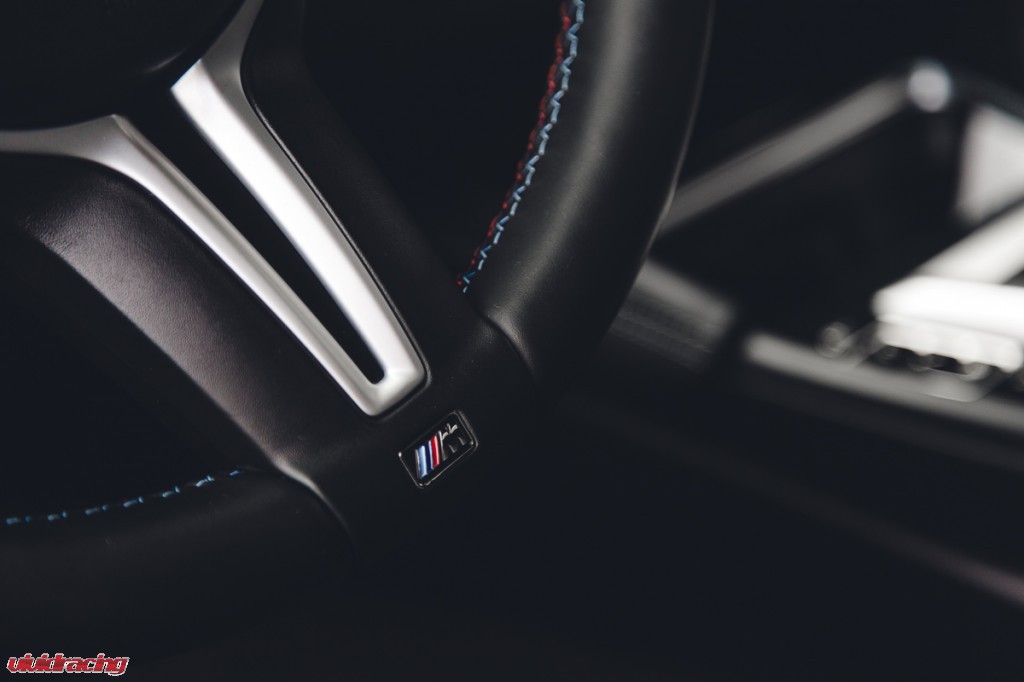
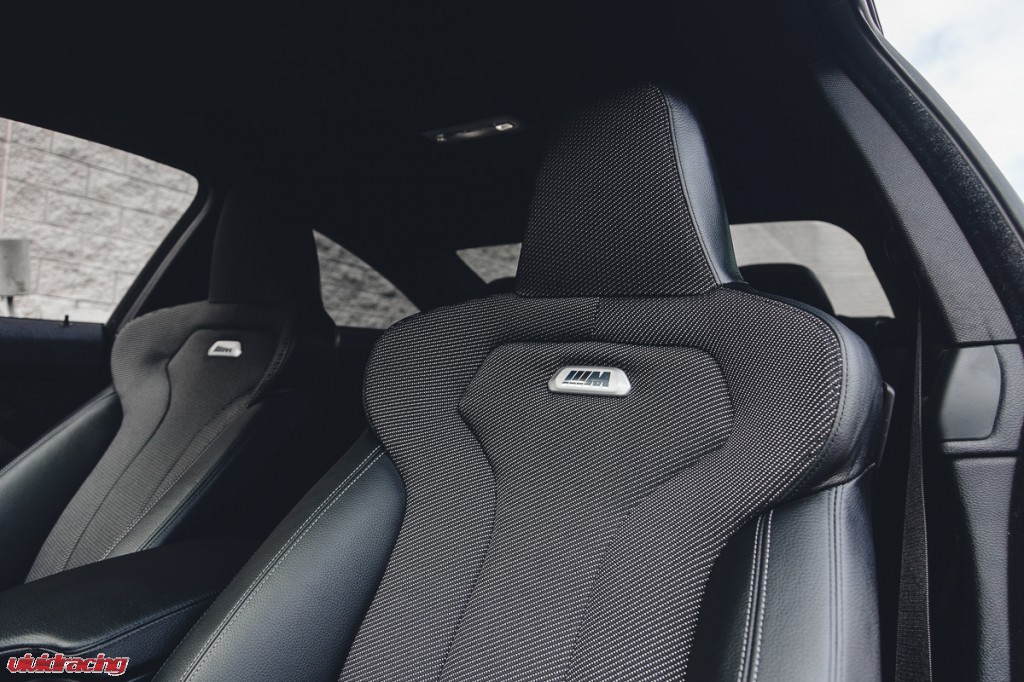
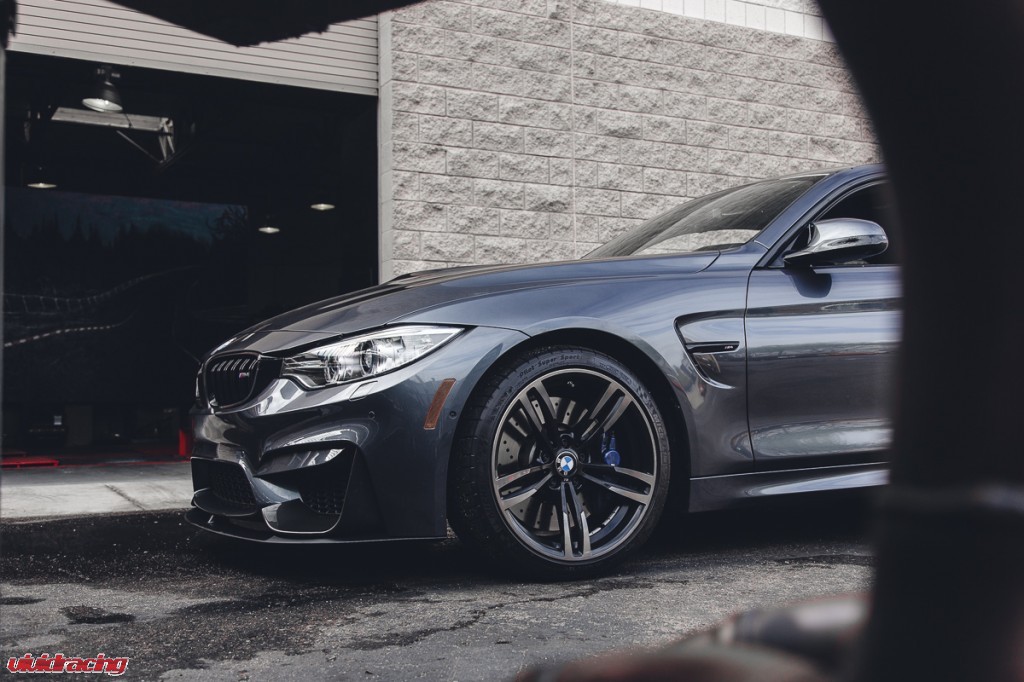
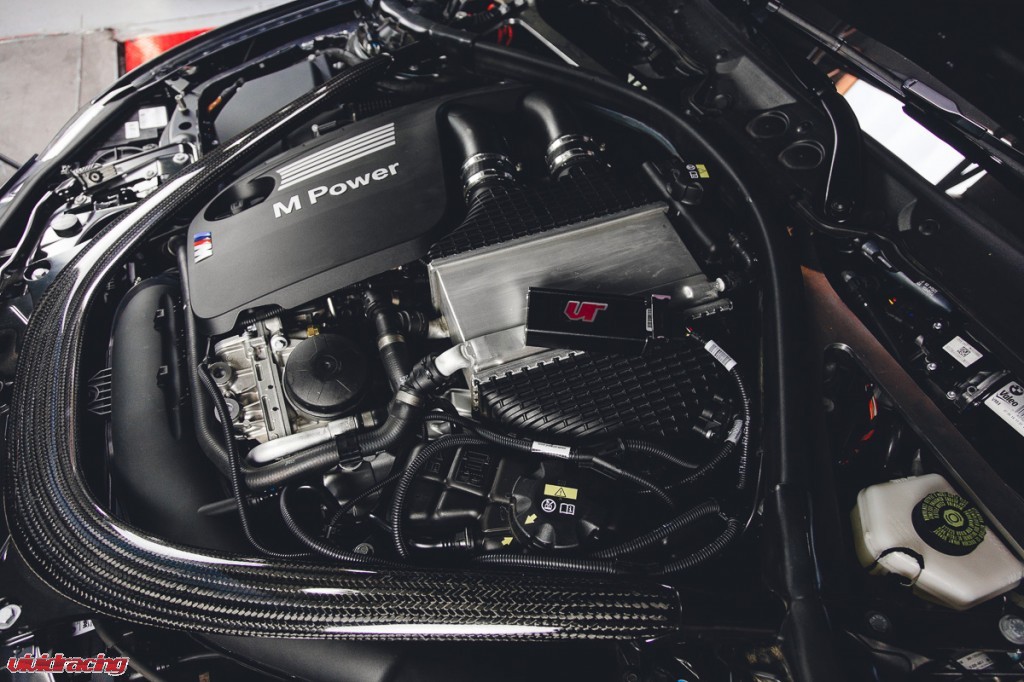
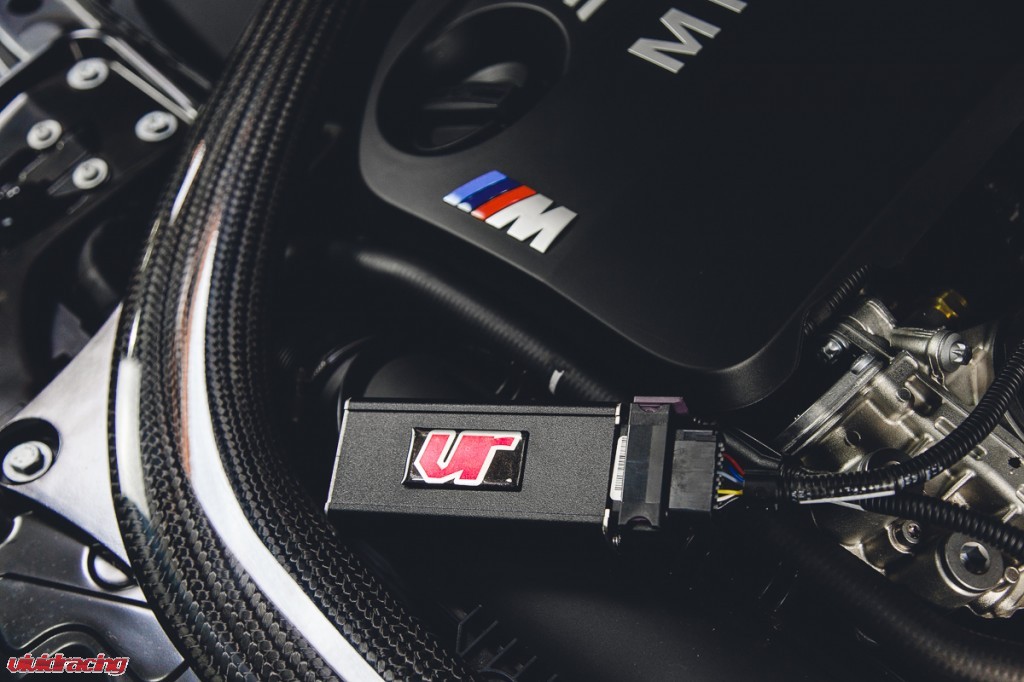
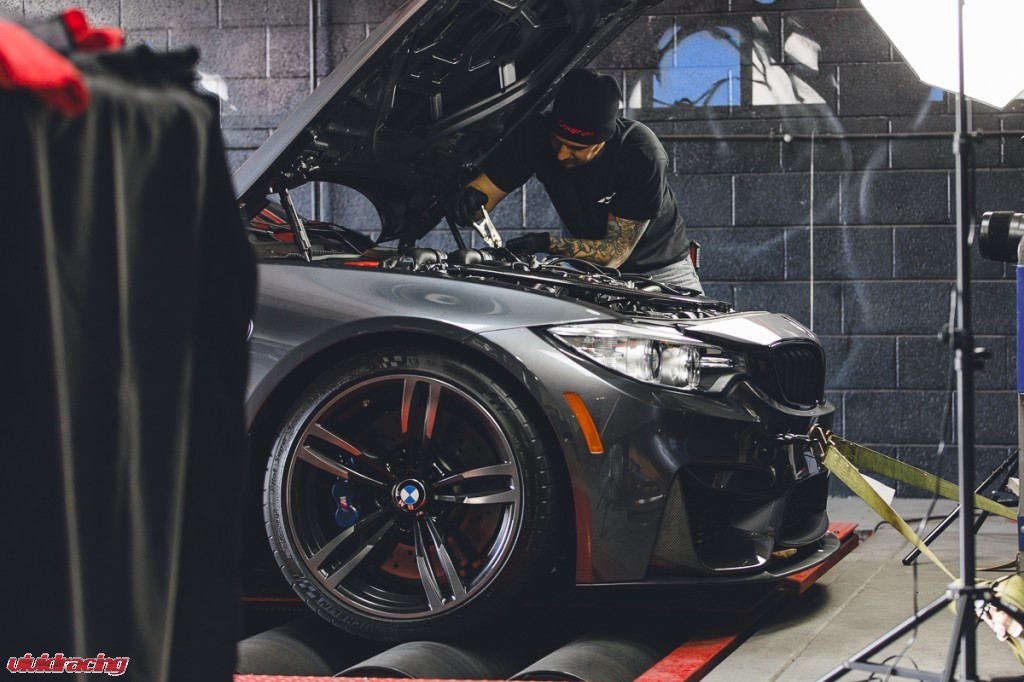
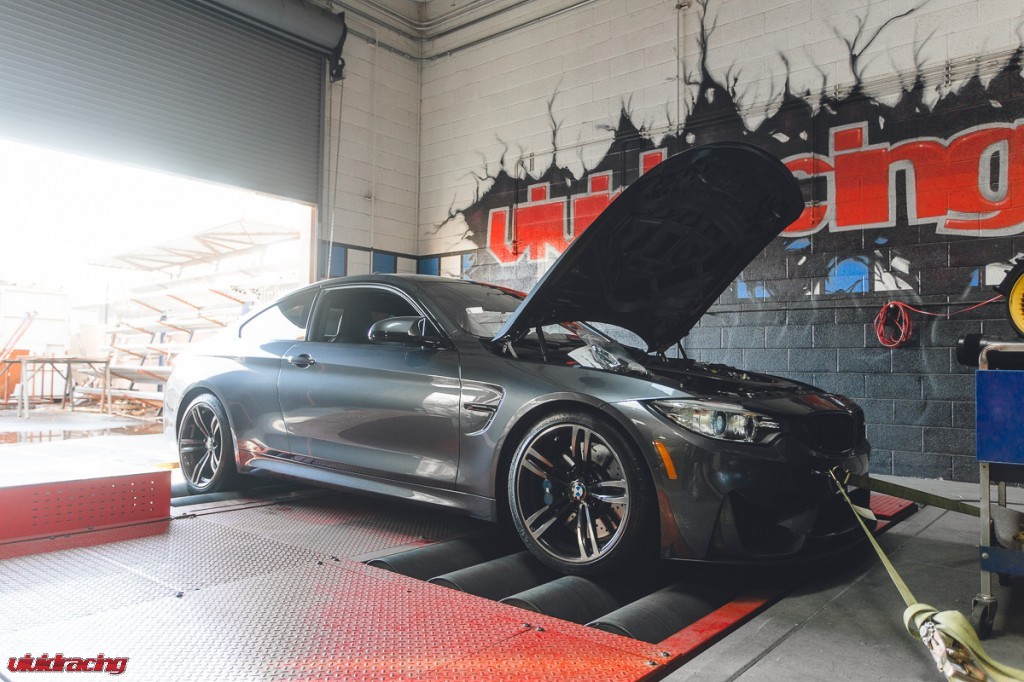
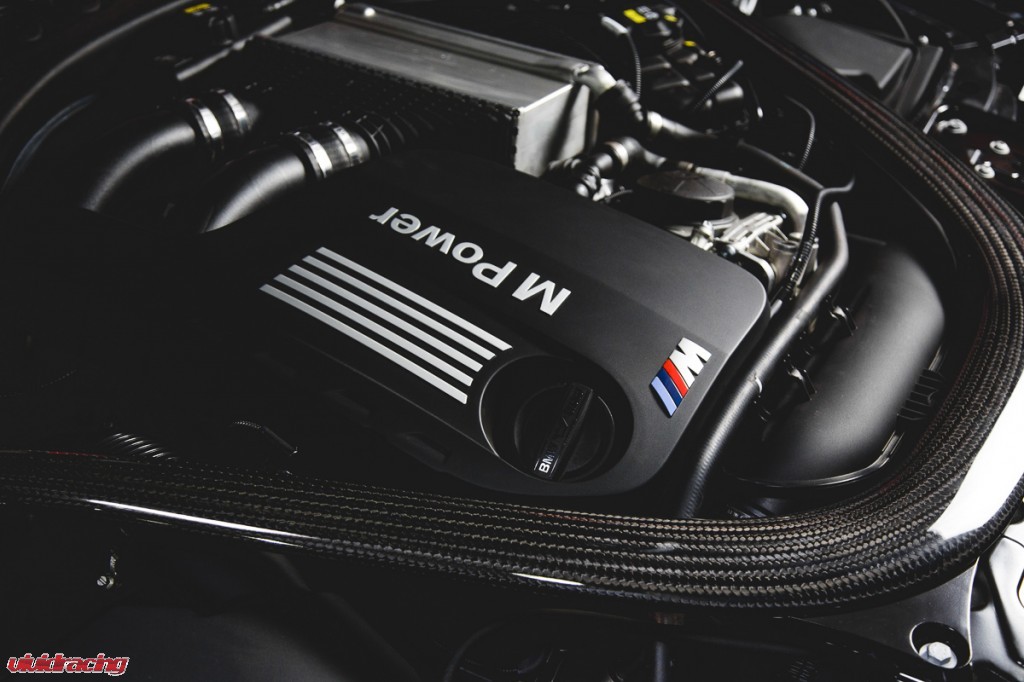
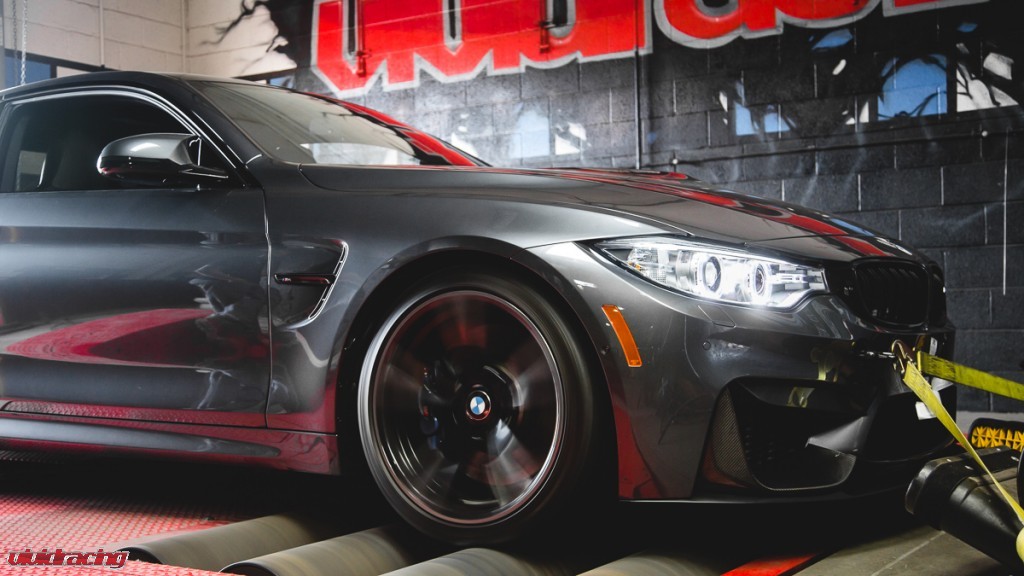
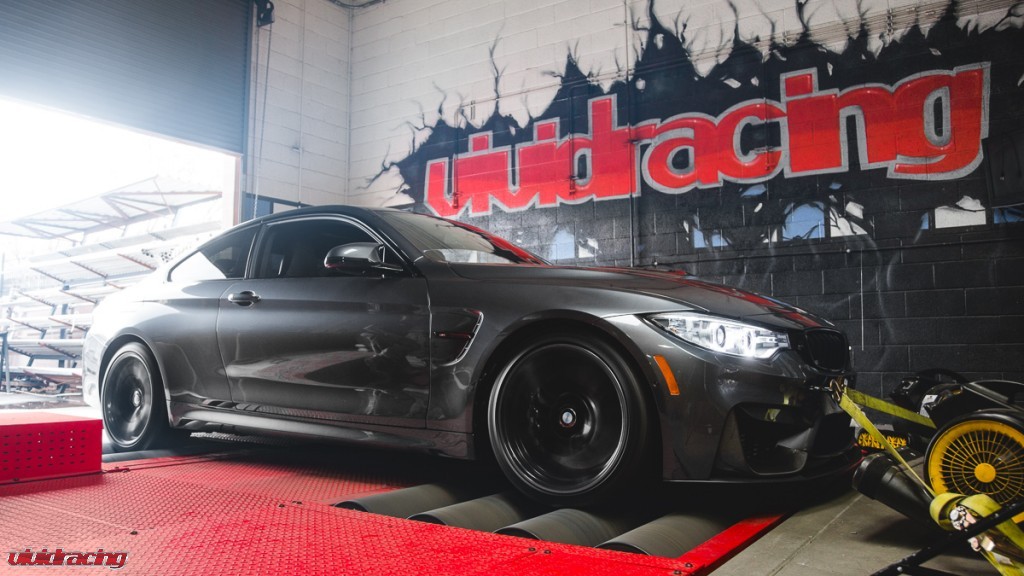
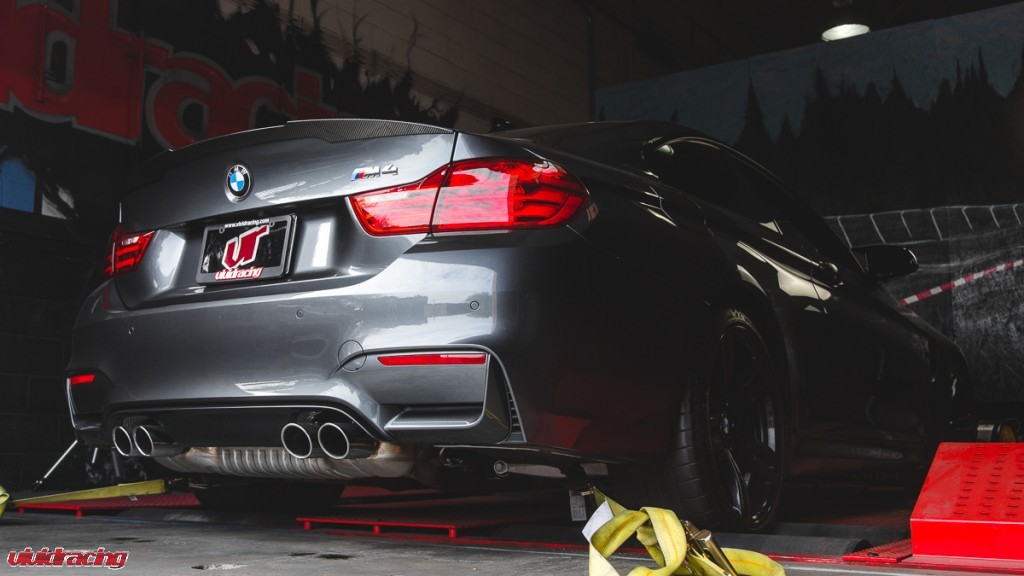
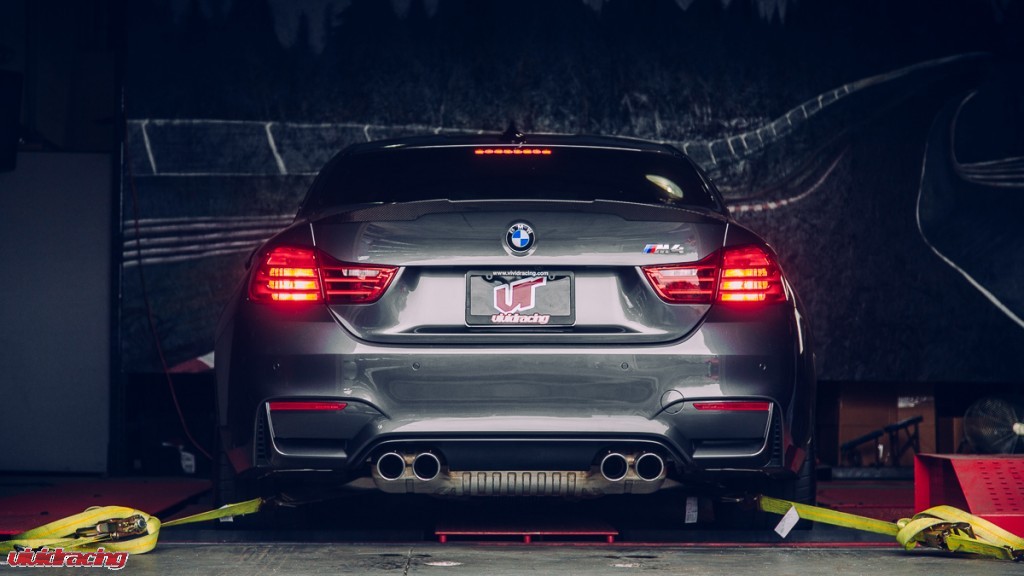

UPDATE
The next step to making even more power from this 3.0 Liter twin turbo was to get the M4 on the lift and begin designing an exhaust system that would flow better. The restrictive OEM downpipes were removed to make way for the fabrication process of a new set of Agency Power High Flow Downpipes. We choose to go the route of high flow catalytic converters over a catless design, so we could keep the M4 emission compliant and check engine light free, all while producing the best performance possible.
So the downpipes are done but we have some explaining to do with the VR Tuned tuning box kit and our original test numbers. What we have found out is that on the back of the tuning box is a dial that is preset to 6. If you adjust this dial up or down, it helps the tune adapt to different fuel or environmental conditions. So we retested the Tuning Box at both setting 3 and 4 which fixed the huge drop in power at 6100rpm which was probably the car pulling timing. You can read more about this here – https://www.vrtuned.com/tuning/dialing-in-the-vr-tuned-tuning-box-kit/
So we tested the downpipes with the VR Tuned Tuning Box setup correctly and compared to our stock baseline. These were high flow cats to help the car breathe better but not affect emissions and cause any CEL. So the turbos are flowing better, but not 100% free flowing. The downpipes really picked up torque from 3700rpm all the way to our stop test with a peak gain of about 25ft/lbs and then maintained an average of about 10ft/lbs going further. When the turbos started to hit, you could really feel these kick in. On the horsepower side, the power again started at 3700rpm with a gain of about 15hp which held steady to about 6100rpm where it tapered down to about 10hp. All of this was run on 91 octane and in all wheel drive mode on our Mustang Dyno. Tests were also done in Sport Plus with traction control off. The results show a nice curve with the high flow cat downpipes adding some gains throughout the power curve. Once catless downpipes can be made and a better flowing exhaust, we should see even further gains happen!
Just released our Tuning Box video. Enjoy!
Update
Now that the Downpipes were in place the next plan of action would be creating a system that would deliver more air to the engine and create more horsepower!
The factory air boxes were removed and clearance was made for a new Cold Air Intake System that would feed the twin turbocharged engine with as much air as possible and increase the performance and drivability.
The new system would feature two high flow Agency Power Filters, Heat Shields and larger 3″ Aluminum piping.
With the intakes prototyped and checked of the to-do list, the attention was moved over to the vehicles exhaust system. When mocking up an exhaust system, there is more to it than just welding a few pipes together. The idea is to create a system that allows for a quicker, more efficient path for exhaust gases to escape. In turn the vehicle can “breathes” better, therefore spent fuel and air exit the combustion chambers much quicker. This means more fuel and air can be burned to create more power. The new catback system would feature a dual exit 3″ stainless steel piping design, two X-Pipes, and a valvetronic muffler.
Not really related to the R&D project but we did install a set of H&R springs. Check out the article here – https://www.vividracing.com/blog/vividracing-client-cars/bmw-m4-f82-lowered-with-hr-springs-video-inside/
We just finished testing our new Agency Power developed intake kit for the m4. The intake which is a dual system to accomondate the 2 turbochargers features aluminum tubing, CNC MAF sensors, and AP high flow air cone filters. The production models will be finished powdercoated of course but this is for testing. Running the car in 3rd gear on 91 octane COMPLETELY stock, we tested the intake against the original baseline run. The intake did excellent making around 20 horsepower and 20ft/lbs of torque. Here are some sneak pics, the dyno sheet, and a short in car video you can click to watch!
Dyno Video of Intake Here